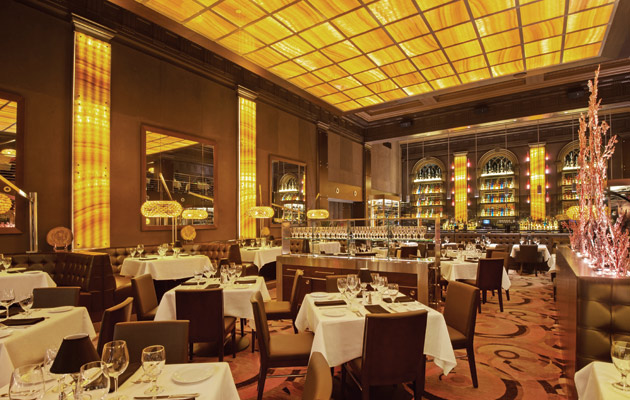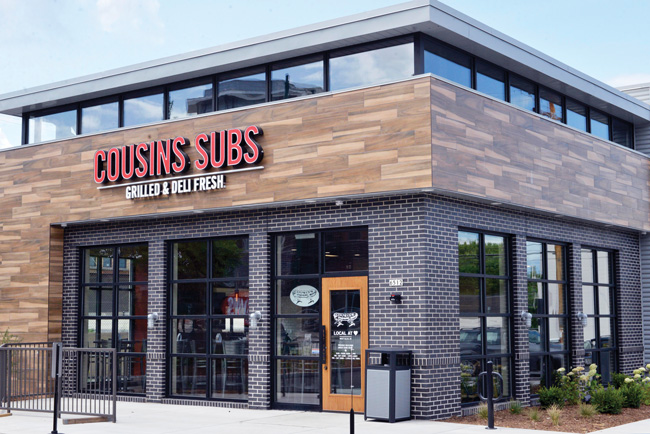It’s incredible how much has changed in the restaurant industry in just the last several weeks since the beginning of the COVID-19 pandemic. I spent my entire career designing restaurant brands for both multi-unit and independent operators and nothing has — or hopefully ever will — challenge us more than what is currently happening globally. Restaurants are certainly facing tectonic shifts due to sudden changes in guests’ priorities.
Consumers are feeling and experiencing things they never have before. From what they deem as necessary to how accepting they are of social gatherings; consumers are being forced to reconsider everything. While we don’t quite know exactly what the final outcomes will be in the long term, we can reshape restaurant concepts based on what we do know now and continue to adapt moving forward.
For restaurant operators, there are four new paradigms of guest perception. How we handle these changing operational models today will predict how well guests receive and perceive restaurant concepts tomorrow. Now is a time to not only embrace change but create stronger brand concepts in the process. Here is a breakdown of four key consumer paradigm shifts and how restaurant operators can shift their own thinking to make room for growth.
1. Minimize the risk of dining out. Prior to the pandemic, guests really didn’t have to think through a risk/reward analysis associated with dining out. The decision-making process was much more focused on dining occasions tied to convenience, socialization, entertainment and escape. Now, guests must consider the potential health risks associated with dining out. Operators can minimize these risks through a focus on:
- Social distancing: For restaurants, this means creating more space inside the four walls to accommodate the recommended 6 feet between groups. While I do not believe dining rooms will go away, we will definitely see table spacing and seating capacity changes in the short-term and an overall move toward more micro-social dining environments. We recommend restaurant operators reduce seating by 50% to 75%, depending on the size of dining rooms, to comply with social distancing guidelines. While this may impact revenue and labor in the short-term, we all must do our part to make consumers feel safe and comfortable in restaurants again.
- Cleaning, sanitizing and disinfecting: Guests expect a higher level of cleaning as restaurants reopen. While we all know the pandemic wasn’t caused by or transmitted through food, cleaning and sanitizing have always been important aspects of having and maintaining a healthy dining environment. Now they are even more critical. They include hand washing, cleaning surfaces between each table seating and dayparts, disinfecting touch points, and sanitizing food contact surfaces. In addition to the reality of keeping surfaces clean, restaurateurs now need to contend with how guests perceive the cleanliness of their establishment. The psychology of cleanliness and how consumers perceive the environment is critical moving forward.
- Personal protective equipment: It’s not just consumer trust that we have to keep in mind. As we reopen, restaurant operators also have to protect their employees. This means providing them with the right PPE to ensure they feel safe doing their jobs, delivering food and interacting with guests. This means giving them gloves, face masks and equipment that facilitates contactless food delivery.
2. Improve off-premises dining. We are already seeing incredible changes to increase and improve the off-premises experience, and we expect that to continue evolving at a fast pace. These includes integrating technology that fosters safe pick-up and delivery. Technology has played a huge role in restaurants during the lockdown, as more operations shift to online ordering, curbside pick-up, self-managed delivery, and rapid pick-up systems to create safe ordering and distribution systems. In partnership with the rise and acceptance of takeout and delivery orders, meals prepared in food trucks, ghost kitchens and consolidated takeout/delivery units will continue to gain a broader customer base. This has been an enormous shift in the short-term that we believe will continue to a lesser degree as consumers react to the slow reemergence of daily life.
3. Deliver value for the cost. Restaurants dealing with a staggering loss of sales volumes and the increase in labor required to meet their guests’ new demands will inevitably lead to higher prices. However, we believe that consumers will be fairly accepting of these increases if they believe they are getting real value or if they are supporting a worthy cause. As long as restaurant operators communicate the increases with honesty and transparency, consumers will appreciate the chance to rise to the occasion and support their favorite brands. We have seen this already with the popularity of Takeout Tuesday and campaigns to support impacted industry workers. Operators should take comfort in knowing that their loyal customers will remain true to the cause, as long as it’s one worth believing in.
Bonus Solution
4. Redefine healthy. COVID-19 has paved the way for a new take on healthy and healthful. It no longer just means offering salad, grass-fed meat, or plant-based proteins. It means offering better cleaning and sanitization methods, crisp and clean designs, and additional open, outdoor areas to accommodate space for social distancing. Consumers will want to dine out again, however, the environments will change to meet the new demands on a healthy environment. People will gravitate toward cleaner environments and ones that facilitate controlled food service processes and environments, contactless food delivery and sanitized surfaces.
Interested in learning more?
Designing Restaurants in a Post-Pandemic World
Best Practices for Safe Take-out and Delivery
Miami Grill Prepares for New Normal
Steve Starr, president of starrdesign in Charlotte, N.C., is a nationally recognized leader in restaurant and retail design. While his insight and expertise span the hospitality industry, his focus is on branding, consumer behavior and the development process.
Do you have a problem? Would you like three solutions?




